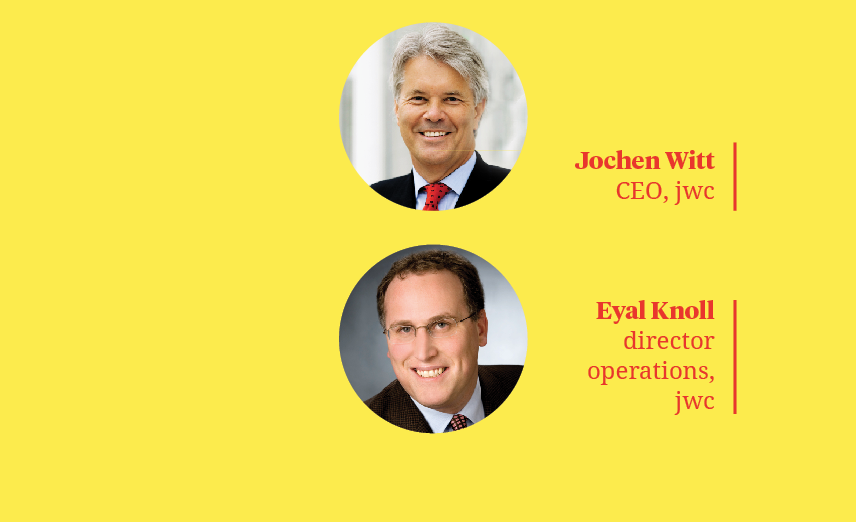Jwc’s Jochen Witt & Eyal Knoll discuss the pitfalls of ranking the trade fair industry.
It’s happened many times before, most recently, during UFI’s Shanghai Congress in November. An EVP of one or the major global trade exhibitions approached us and asked: “Tell me, what do you think is our market share?”. The short version of Jochen’s reply was: “Tell me, what do you think is your market?”.
This question, and the essence of the response, revealed an issue our industry has been struggling with for a long time. Jochen’s response brings us directly to the core of the problem. Any number of so called market share reports can be found in publications for our industry. Unfortunately, they don’t pass simple but essential quality tests because the main question in these assessments, i.e. ‘what is the market?’ is not clearly and consistently (over time) defined.
As a consequence, the variances in published market share assessments are very large. For example, one assessment we have seen (for the year 2014) attributes a market share of six per cent for Reed Exhibitions while GL Events market share was far below, determined to be one per cent.
Another recently released study by one of London’s esteemed equity research companies stated that Reed’s market share sits at three per cent, equal to the three per cent market share it assigned to GL Events. So what is the reason for these differences? It is the lack of clarity in the underlying assumptions.
When assessing market shares it is essential to firstly define the ‘market’. To begin with, revenues which can be generated along the traditional value chains in our industry could give an indication of the meaning of ‘market’. More specifically, incomes can be generated from space rental, services, conferences, guest events, or from venue management, just to name a few.
Some companies in our industry are generating revenues in all of these areas, others only in selected ones. GL Events is a good example: Their revenue is largely divided into three areas: events, exhibitions and venue management, all with an underlying strong financial stream coming from services. So called ‘pure organisers’ like Reed or UBM mainly generate revenues from exhibitions (space rental).
But, they also organise paid-for events (e.g. conferences) and, in the case of Reed, a relatively minor (but not insignificant) revenue stream is generated from venue business directly (Vienna). So when we look at market shares, we need a clear definition of the underlying criteria and a clear definition of the ‘market’. Before this question is settled, current market share assessments will continue to be all over the place.
To muddy the waters even further, it appears that some market share reports settle on a specific methodology or market share delineation to suit the figures (rankings) one would like to see reflected.
A curious consequence of this misperception was recently published under the article ‘The top organisers ranking for 2016’. The ‘ranking’ was based on the 2015 organising revenues plus 2016 M&A.
Firstly, it is highly inappropriate to rank organisers according to their 2015 turnover plus 2016 M&A. What a disservice this must be for some important product and sales teams in some companies, as this comparison neglects to take into account any organic growth achieved in 2016.
The result is, therefore, a severe misrepresentation of achieved revenue figures and consequently a misstatement of the actual true rankings. Another oddity we found: certain companies are completely missing in this ranking, e.g. Messe Nürnberg or Messe Berlin.
In addition to these basics, a robust ranking showing the relative operational strength and size of a company should try as best possible to account for F/X effects or at least indicate to what extent these effects have (not) been taken into account. It appears that no attempt was made to do so.
A ranking for 2016, based on an averaged 2015 F/X rate adds murkiness to the water. And something unique to our industry which any insider knows well; many companies have strong cyclicality swings in their numbers.
These stem from a few large events occurring only every two or three years. There are simple ways to account for that, but none have made it into the ranking in the article.
If we want meaningful rankings or assessments of market shares in our industry, a detailed definition of the respective market and it structures (segments) is needed first.
Based on such definitions, we can start talking about market shares and/or rankings as well as climb or decline movements among the top players. For the pure organiser business, non-financial KPIs, for example net rented sqm need to be incorporated and of course these need to be adjusted for cyclicality.
If we want to have rankings for the broader business such as the pure organiser business plus conferences, services and/or venue business etc., we can use turnover figures but need to specify what exactly is being compared. Any other comparison yields misrepresentation of true market shares and as a consequence the achieved rank. EW
AMR International will cover this topic in the next edition of EW (out April 2017).








